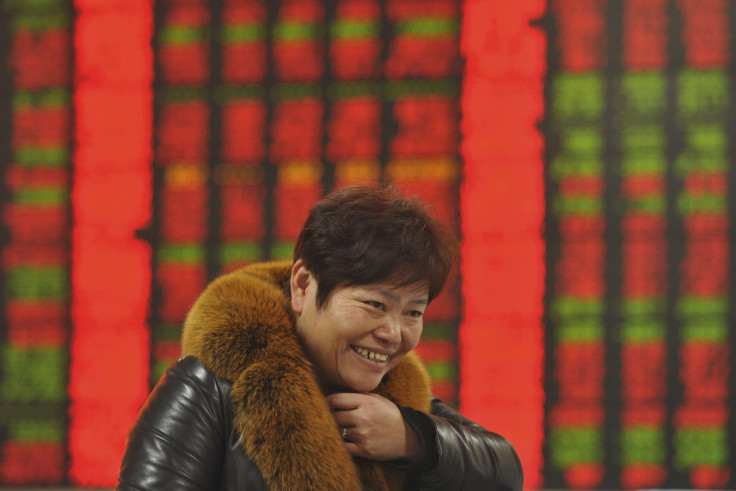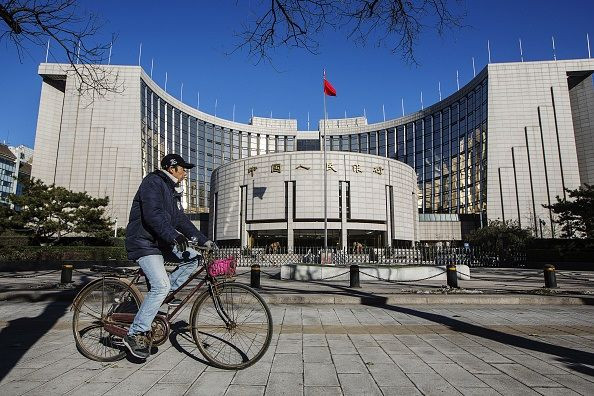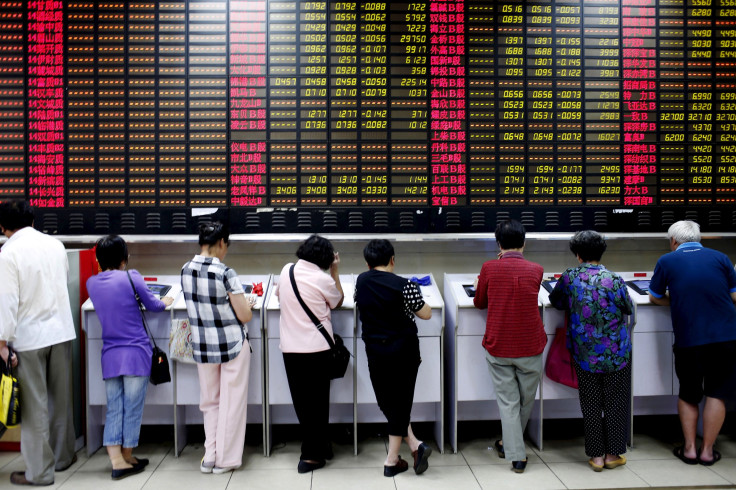Share Prices In China Rise Friday After Government Moves To Prop Up Yuan And Suspend Circuit Breaker

SHANGHAI — Markets in China rose Friday after Thursday’s sharp falls though prices fluctuated throughout the day, with sentiment still brittle following this week’s drop in the value of the Chinese yuan. Reported government-backed steps to prop up the value of the yuan, which dropped to its lowest point against the dollar for five years earlier this week, in offshore trading helped calm investor sentiment.
China’s main indexes in Shanghai and Shenzhen closed up almost 2 percent and just over 1 percent respectively, while the benchmark CSI 300 Index was up just over 2 percent. Hong Kong’s Hang Seng Index, which also fell 3 percent Thursday, was up 1.1 percent in afternoon trading. Japan’s Nikkei, however, reversed early gains to finish some 0.4 percent lower amid continuing concerns about China’s economy.
Chinese investors were partially reassured by the authorities’ announcement late Thursday that they were suspending a circuit-breaker mechanism, introduced just this week, which many analysts said had only led to increased fluctuations on China’s notoriously volatile stock markets.

The mechanism, introduced Monday, was intended to prevent volatility by pausing trading when shares fell 5 percent, and halting it for the day if they fell 7 percent. However, after trading was stopped early both Monday and Thursday, many observers complained that the mechanism had only alarmed investors, leading to rapid sell-offs as soon as trading resumed after the initial pause.
Experts also said the threshold for the suspensions had also been set too low for China’s notoriously volatile markets — preventing bargain-hunting investors from intervening, as often happened in the past, if share values fell 5 or 6 percent. They pointed out that while a circuit breaker mechanism was introduced in the U.S. in the 1980s, it had only once led to a trading halt.
Gary Liu, deputy executive director of the China Europe International Business School’s Lujiazui Institute of International Finance in Shanghai, told International Business Times that the circuit breaker should have been set at a double-digit level.
“The band was too narrow,” he said. “And the initial suspension of trading, combined with sentiment that was already brittle due to worries about the economy and this week’s falls in the yuan, just panicked investors.”
Liu said the introduction of the circuit breaker had been a “superficial measure” designed to help regulators avoid addressing other more structural problems in the country’s stock markets. The markets boomed and then plummeted last year, doubling in value in six months before falling some 30 percent between June and July. Liu, like many analysts, argues that China’s markets remain too policy-driven, and says authorities intervened too early to prop up share prices last year, making further falls hard to avoid.
Deng Ke, spokesman for China’s Securities Regulatory Commission (CSRC), said in a statement that the circuit breaker should not be blamed for the falls on the market this week, “but the negative impact [of the policy] has now exceeded the positive side” and the policy would be shelved for further study.
Influential business publication Caixin also reported social media speculation that the head of the CSRC, Xiao Gang, had tendered his resignation in response to this week’s chaos on the markets, though this has not been confirmed and the online article was later deleted.
Chinese authorities also sought to reassure markets by introducing new rules for holders of major stakes in companies: fears that an end to a six-month ban on the selling of shares by major stockholders — due to come into effect Friday — would lead to a major sell-off were seen as another major factor in this week’s market falls.

The CSRC announced Thursday that anyone holding more than 5 percent of a company’s stock would only be allowed to sell off 1 percent of that company’s total shares in any three-month period, and would have to give the market 15 days notice before doing so.
However, despite a higher fixing of the value of the Chinese yuan by China’s central bank Friday, investor concerns about the currency have been compounded by data showing a further fall in China’s manufacturing activity last month, and a slight slowing in previously rapid growth in the country’s service sector.
China’s GDP growth fell to 6.9 percent, its lowest rate in six years in the third quarter of last year. And in spite of Friday’s recovery, China’s markets finished the week some 10 percent down on Monday’s opening, declining to their lowest level in several months.
© Copyright IBTimes 2025. All rights reserved.






















